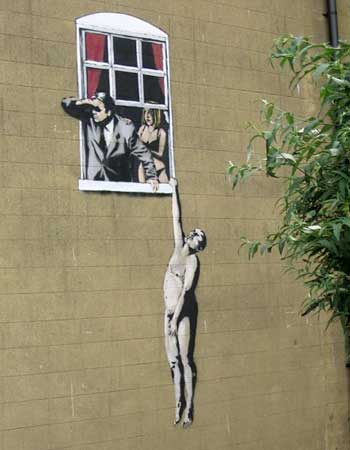
For my museum visit I went to the Tampa Museum of Art when I went home for the October break. This was my first time going to an art museum in Tampa and was really surprised with what I found. The most interesting piece I saw at the museum was a sculpture named Over the Waves by Paul Jennewein. I liked this piece not only because it was different but also because I am related to Paul. Designed as a fountain, this sculpture of a young boy standing atop a dolphin was created in response to the demand for garden sculpture in the 1920s. Three sizes were made: a 54-inch bronze of which eleven were cast; a 12-inch bronze, cast in an edition of six; and a 48-inch version of an unknown edition. The museum’s piece is from this latter edition.
Another a piece I found different was William Pachner’s “Landscape”. When I saw this piece it looked like a little kid made it. This piece does not look very hard to make and I was surprised knowing how art that looks easy can be put in a museum. A winter resident of the Gulf Coast since the early 1950s, William Pachner celebrates the natural landscape of Florida in this abstract painting. As with much of Pachner's work, viewers are not always sure what they are looking at. Not only is the subject matter abstracted, but it also acts as a metaphor. The energy of the colors play off one another and buzz with feeling, resulting in what the artist calls an “imagined landscape, a scene from his inner life.” Pachner states, "It is memory, it is imagination, it is spontaneity, it is conscious and unconscious. Finally, then, it has to be art.
- Conner-









